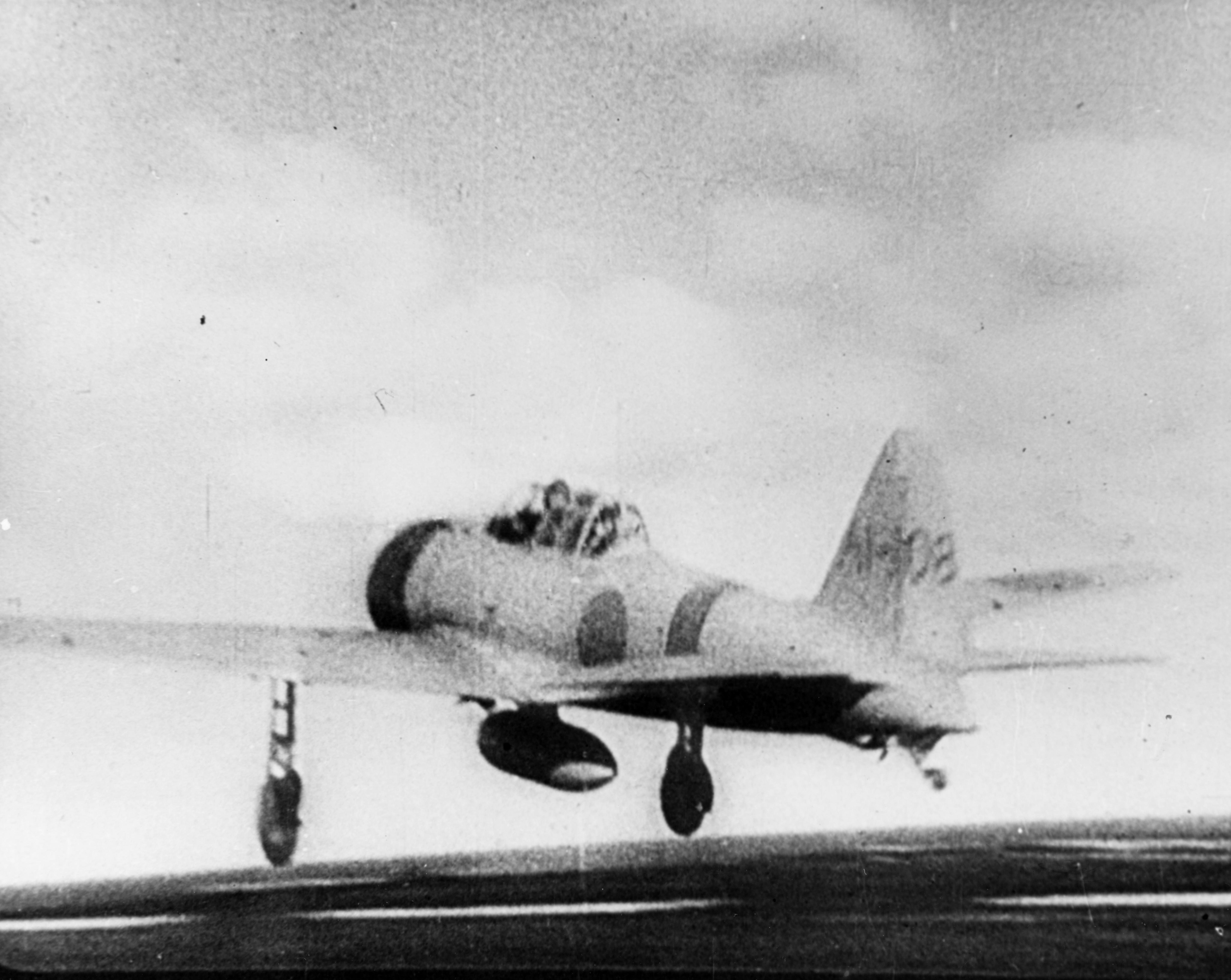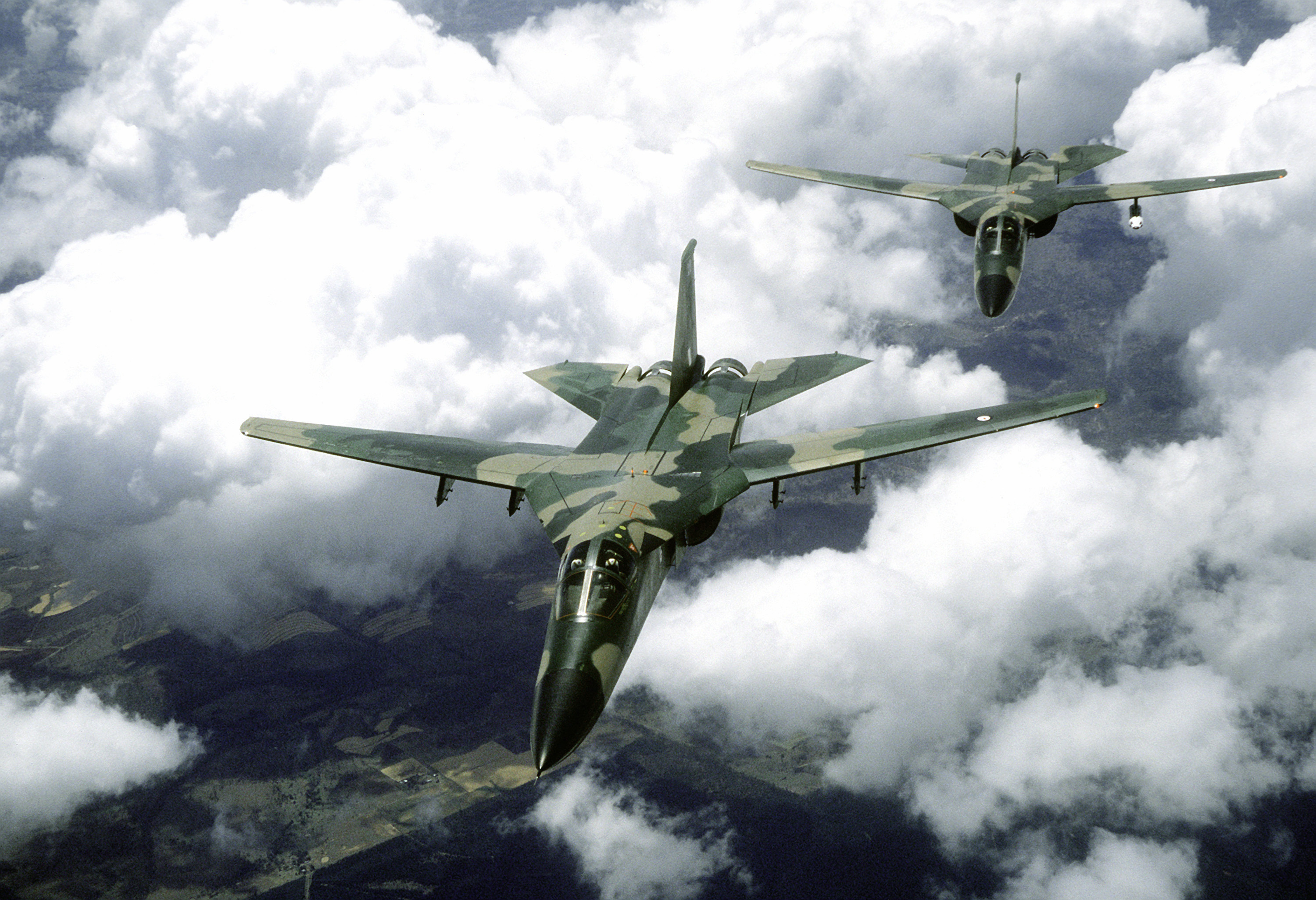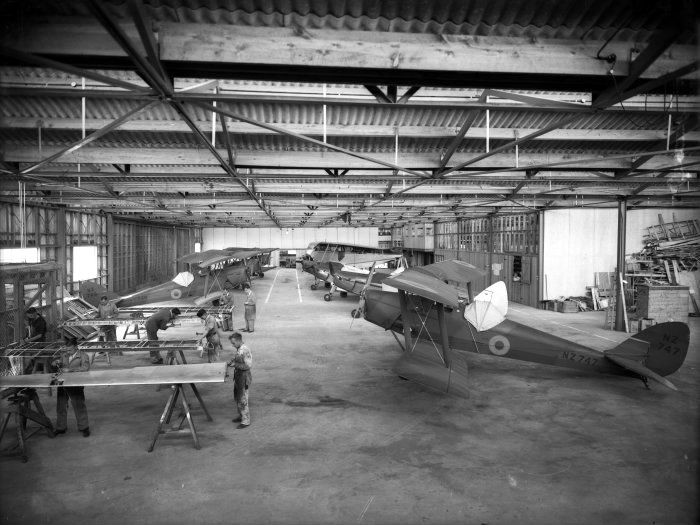|
Darwin Aviation Museum
The Darwin Aviation Museum, previously known as the Australian Aviation Heritage Centre, displays aircraft and aircraft engines of relevance to the Northern Territory and aviation in Australia generally. It is located in Darwin suburb of Winnellie. History The museum's origins can be traced to 1976 when a group of enthusiasts sought to preserve aviation relics after the destruction of Cyclone Tracy. It was later broadened to include the documentation of World War II aircraft crash sites and the preservation of aviation relics related to the defence of Darwin during World War II. The museum was first opened to the public in 1988. In the late 1980s, the Society negotiated with the United States Air Force (USAF) and the Northern Territory Government to obtain a surplus USAF Boeing B-52 Stratofortress bomber and to build a museum to house and display the aircraft. In June 1990, the new Darwin Aviation Museum opened. In 2011, the museum was considered as a display location for ... [...More Info...] [...Related Items...] OR: [Wikipedia] [Google] [Baidu] |
Stuart Highway
Stuart Highway is a major Australia, Australian highway. It runs from Darwin, Northern Territory, Darwin, in the Northern Territory, via Tennant Creek and Alice Springs, to Port Augusta in South Australia; a distance of . Its northern and southern extremities are segments of Australia's Highway 1 (Australia), Highway 1. The principal north–south route through the central interior of mainland Australia, the highway is often referred to simply as "The Track". The highway is named after Scotland, Scottish explorer John McDouall Stuart, who was the first European to cross Australia from south to north. The highway approximates the route Stuart took. Route description Overview Stuart Highway runs from Darwin, Northern Territory, in the north, via Tennant Creek and Alice Springs, to Port Augusta, South Australia, in the south – a distance of . The Royal Flying Doctor Service of Australia, Royal Flying Doctor Service uses the highway as an emergency landing strip and sections ... [...More Info...] [...Related Items...] OR: [Wikipedia] [Google] [Baidu] |
The Daily Telegraph (Sydney)
''The Daily Telegraph'', also nicknamed ''The Tele'', is an Australian tabloid newspaper published by Nationwide News Pty Limited, a subsidiary of News Corp Australia, itself a subsidiary of News Corp. It is published Monday through Saturday and is available throughout Sydney, across most of regional and remote New South Wales, the Australian Capital Territory and South East Queensland. A 2013 poll conducted by Essential Research found that the ''Telegraph'' was Australia's least-trusted major newspaper, with 49% of respondents citing "a lot of" or "some" trust in the paper. Amongst those ranked by Nielsen, the ''Telegraph'' website is the sixth most popular Australian news website with a unique monthly audience of 2,841,381 readers. History ''The Daily Telegraph'' was founded in 1879, by John Mooyart Lynch, a former printer, editor and journalist who had once worked on the ''Melbourne Daily Telegraph''. Lynch had failed in an attempt to become a politician and was lookin ... [...More Info...] [...Related Items...] OR: [Wikipedia] [Google] [Baidu] |
Rutan Long-EZ
The Rutan Model 61 Long-EZ is a tandem 2-seater homebuilt aircraft designed by Burt Rutan's Rutan Aircraft Factory. The Long-EZ has a canard layout, a swept wing with wingtip rudders, and a pusher engine and propeller. The tricycle landing gear has fixed main wheels with streamlined spats and a retractable nosewheel. Its predecessor was the VariEze, plans for which were first available to homebuilders in 1976. The prototype Long-EZ, N79RA, first flew on June 12, 1979. Design The Long-EZ was a scaled-up redesign of the VariEze predecessor, allowing for the use of readily available Lycoming aircraft engines instead of the Volkswagen-derived engines or hard-to-find small Continentals for which the VariEze was designed. Changes from the VariEze included a larger main wing with modified Eppler 1230 airfoil and less sweep, larger strakes containing more fuel and baggage storage, and a slightly wider cabin. The canard uses the same GU25-5(11)8 airfoil as the VariEze. Plans were o ... [...More Info...] [...Related Items...] OR: [Wikipedia] [Google] [Baidu] |
Aero Commander 500 Family
The Aero Commander 500 family is a series of light-twin piston-engined and turboprop aircraft originally built by the Aero Design and Engineering Company in the late 1940s, renamed the Aero Commander company in 1950, and a division of Rockwell International from 1965. The initial production version was the 200-mph, seven-seat Aero Commander 520. An improved version, the 500S, manufactured after 1967, is known as the Shrike Commander. Larger variants are known by numerous model names and designations, ranging up to the 330-mph, 11-seat Model 695B/Jetprop 1000B turboprop. Design and development The idea for the Commander light business twin was conceived by Ted Smith, a project engineer at the Douglas Aircraft Company. Working part-time after hours throughout 1944, a group of A-20 engineers formed the Aero Design and Engineering Company to design and build the proposed aircraft with a layout similar to their A-20 bomber. Originally, the new company was going to build three pr ... [...More Info...] [...Related Items...] OR: [Wikipedia] [Google] [Baidu] |
North American B-25D Mitchell
The North American B-25 Mitchell is an American medium bomber that was introduced in 1941 and named in honor of Major General William "Billy" Mitchell, a pioneer of U.S. military aviation. Used by many Allied air forces, the B-25 served in every theater of World War II, and after the war ended, many remained in service, operating across four decades. Produced in numerous variants, nearly 10,000 B-25s were built. These included several limited models such as the F-10 reconnaissance aircraft, the AT-24 crew trainers, and the United States Marine Corps' PBJ-1 patrol bomber. Design and development The Air Corps issued a specification for a medium bomber in March 1939 that was capable of carrying a payload of over at North American Aviation used its NA-40B design to develop the NA-62, which competed for the medium bomber contract. No YB-25 was available for prototype service tests. In September 1939, the Air Corps ordered the NA-62 into production as the B-25, along with th ... [...More Info...] [...Related Items...] OR: [Wikipedia] [Google] [Baidu] |
Mitsubishi A6M Zero
The Mitsubishi A6M "Zero" is a long-range carrier-based aircraft, carrier-based fighter aircraft formerly manufactured by Mitsubishi Aircraft Company, a part of Mitsubishi Heavy Industries, and was operated by the Imperial Japanese Navy from 1940 to 1945. The A6M was designated as the , or the Mitsubishi A6M Rei-sen. The A6M was usually referred to by its pilots as the ''Reisen'' (, zero fighter), "0" being the last digit of the Japanese calendar#Years, imperial year 2600 (1940) when it entered service with the Imperial Navy. The official World War II Allied names for Japanese aircraft, Allied reporting name was "Zeke", although the name "Zero" (from Type 0) was used colloquially as well. The Zero is considered to have been the most capable carrier-based aircraft, carrier-based fighter in the world when it was introduced early in World War II, combining excellent maneuverability and very long range.Hawks, Chuck"The Best Fighter Planes of World War II" chuckhawks.com. Retrieved: ... [...More Info...] [...Related Items...] OR: [Wikipedia] [Google] [Baidu] |
Mitsubishi MU-2
The Mitsubishi MU-2 is a Japanese high-wing, twin-engine turboprop aircraft with a pressurized cabin manufactured by Mitsubishi Heavy Industries. It made its maiden flight in September 1963 and was produced until 1986. It is one of postwar Japan's most successful aircraft, with 704 manufactured in Japan and San Angelo, Texas, in the United States. Design and development Work on the MU-2, Mitsubishi's first postwar aircraft design, began in 1956. Designed as a light twin turboprop transport suitable for a variety of civil and military roles, the MU-2 first flew on 14 September 1963. This first MU-2, and the three MU-2As built, were powered by the Turbomeca Astazou turboprop. Civil MU-2s powered by Garrett engines were certified as variants of the MU-2B, using the MU-2B type followed by a number. For marketing purposes, each variant was given a suffix letter; the MU-2B-10, for example, was sold as the MU-2D, while the MU-2B-36A was marketed as the MU-2N. The MU-2 has a high c ... [...More Info...] [...Related Items...] OR: [Wikipedia] [Google] [Baidu] |
Hovey Delta Bird
The Hovey Delta Bird is an American ultralight aircraft that was designed by Bob Hovey in 1982 and supplied as plans for amateur construction.Cliche, Andre: ''Ultralight Aircraft Shopper's Guide'' 8th Edition, page E-12 Cybair Limited Publishing, 2001. Design and development The aircraft was designed to comply with the US FAR 103 Ultralight Vehicles rules, including the category's maximum empty weight of . The aircraft has a standard empty weight of . It features a biplane wing configuration, a single-seat, open cockpit, conventional landing gear and a single engine in tractor configuration. The aircraft is made from pop-riveted and gusseted aluminum tubing, with the wings and tail surfaces covered in doped aircraft fabric covering. Its biplane wing has a top span of , a bottom span of , employs cabane struts and one set of interplane struts. The controls are conventional three-axis, with full-span ailerons on the top wing. The landing gear is bungee suspended and in ... [...More Info...] [...Related Items...] OR: [Wikipedia] [Google] [Baidu] |
General Dynamics F-111C
The General Dynamics F-111C (nicknamed "Pig") is a variant of the F-111 Aardvark medium-range interdictor and tactical strike aircraft, developed by General Dynamics to meet Australian requirements. The design was based on the F-111A model but included longer wings and strengthened undercarriage. The Australian government ordered 24 F-111Cs to equip the Royal Australian Air Force (RAAF) in 1963, but the aircraft were not delivered until 1973 because of long-running technical problems. During 1979 and 1980 four of these aircraft were converted to the RF-111C reconnaissance variant. Four ex–United States Air Force (USAF) F-111As were purchased by Australia and converted to F-111C standard in 1982 to replace F-111Cs destroyed during accidents. Australia also operated 15 F-111Gs between 1993 and 2007, mainly for conversion training. The RAAF retired its remaining F-111Cs in December 2010. In Australian military and aviation circles, the F-111 Aardvark was affectionately known as t ... [...More Info...] [...Related Items...] OR: [Wikipedia] [Google] [Baidu] |
De Havilland Dove
The de Havilland DH.104 Dove is a British short-haul airliner developed and manufactured by de Havilland. The design, which was a monoplane successor to the pre-war Dragon Rapide biplane, came about from the Brabazon Committee report which, amongst other aircraft types, called for a British-designed short-haul feeder for airlines.Jackson 1987, p. 443. The Dove was a popular aircraft and is considered to be one of Britain's most successful postwar civil designs, in excess of 500 aircraft being manufactured between 1946 and 1967. Several military variants were operated, such as the ''Devon'' by the Royal Air Force and the ''Sea Devon'' by the Royal Navy, and the type also saw service with a number of overseas military forces. A longer four-engined development of the Dove, intended for use in the less developed areas of the world, was the Heron. A considerably re-designed three-engined variant of the Dove was built in Australia as the de Havilland Australia DHA-3 Drover. D ... [...More Info...] [...Related Items...] OR: [Wikipedia] [Google] [Baidu] |
De Havilland Tiger Moth
The de Havilland DH.82 Tiger Moth is a 1930s British biplane designed by Geoffrey de Havilland and built by the de Havilland Aircraft Company. It was operated by the Royal Air Force (RAF) and other operators as a primary trainer aircraft. In addition to the type's principal use for ''ab initio'' training, the Second World War had RAF Tiger Moths operating in other capacities, including maritime surveillance and defensive anti-invasion preparations; some aircraft were even outfitted to function as armed light bombers. The Tiger Moth remained in service with the RAF until it was replaced by the de Havilland Chipmunk during the early 1950s. Many of the military surplus aircraft subsequently entered into civilian operation. Many nations have used the Tiger Moth in both military and civilian applications, and it remains in widespread use as a recreational aircraft. It is still occasionally used as a primary training aircraft, particularly for those pilots wanting to gain exper ... [...More Info...] [...Related Items...] OR: [Wikipedia] [Google] [Baidu] |
Dassault Mirage IIIO
The Dassault Mirage III () is a family of single/dual-seat, single-engine, fighter aircraft developed and manufactured by French aircraft company Dassault Aviation. It was the first Western European combat aircraft to exceed Mach 2 in horizontal flight,"Mirage III." ''Dassault Aviation'', 18 December 2015. a feat which was achieved on 24 October 1958. In 1952, the French government issued its specification, calling for a , all-weather |









